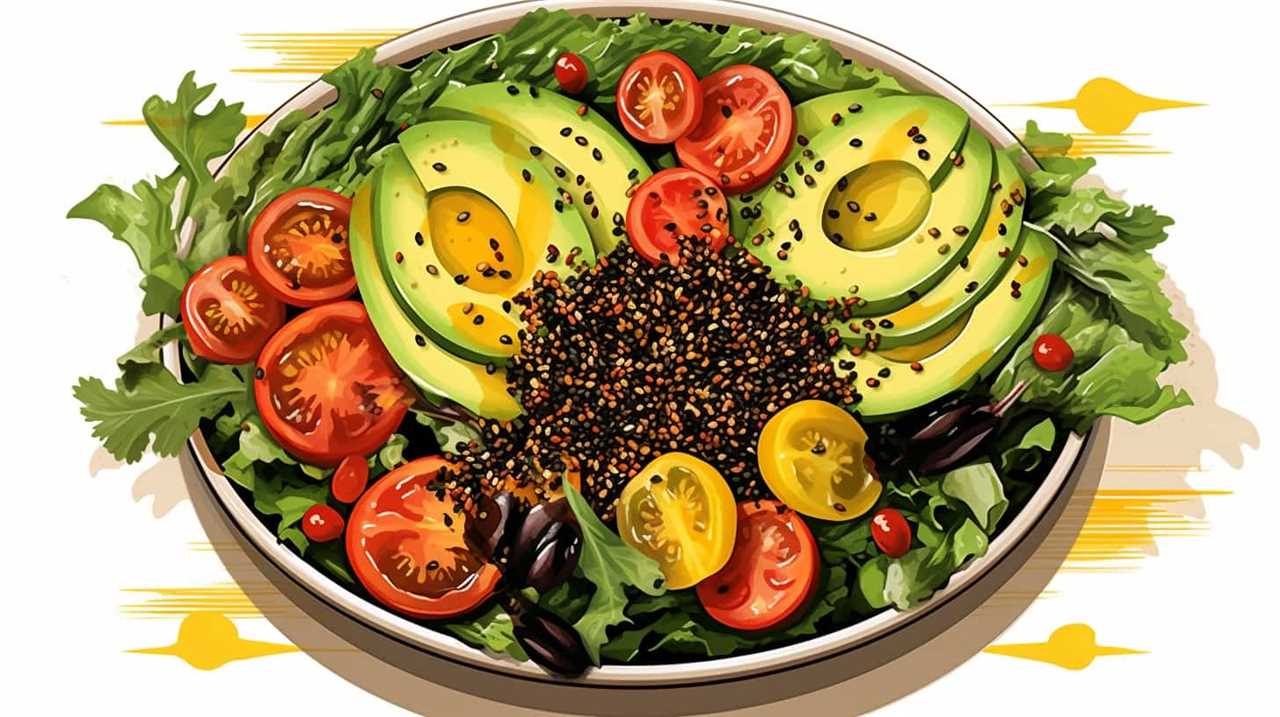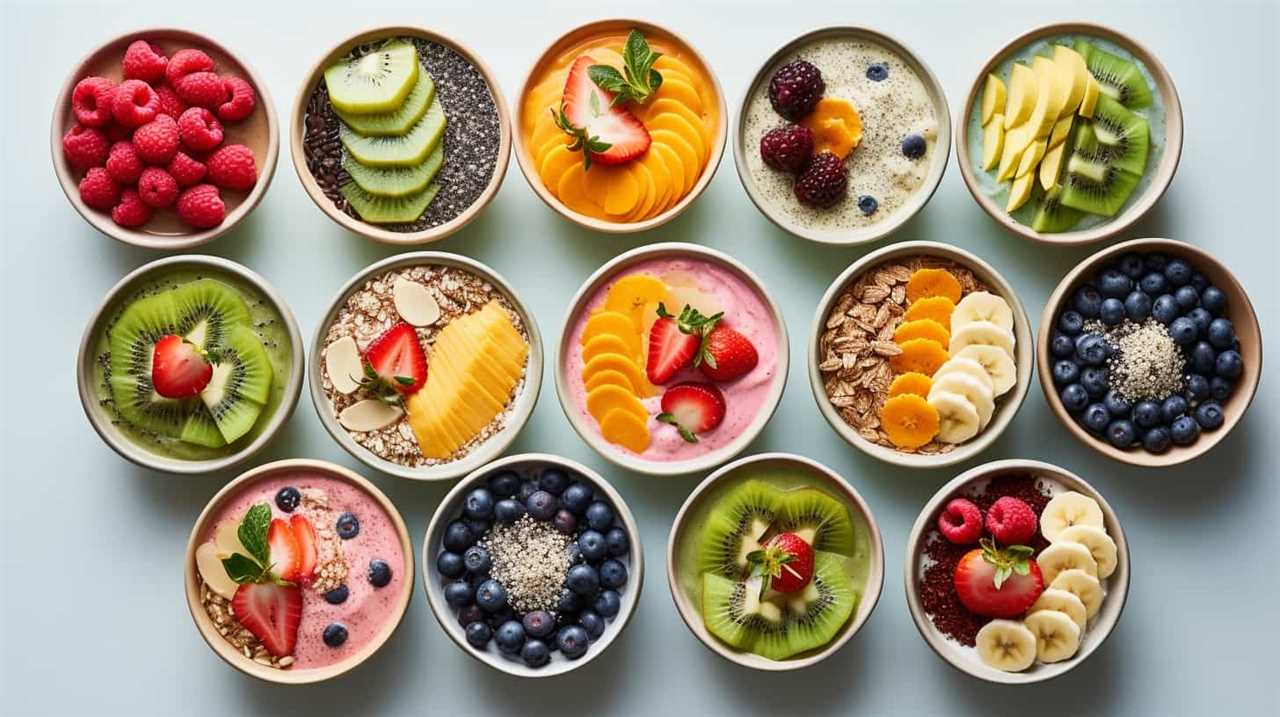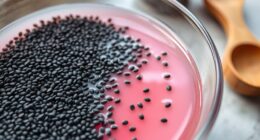
We have discovered the secret to growing our own superfood: seeds.
In this guide, we’ll show you how to cultivate chia seeds right at home.
From choosing the right seeds to harvesting and storing, we’ll provide detailed, practical steps to ensure a successful yield.
Get ready to nourish your body with nutrient-dense, homegrown goodness.
Let’s embark on this journey together and serve ourselves and others with the power of homegrown superfoods.
Key Takeaways
- Prioritize quality, viability, and sustainability when choosing chia seeds.
- Prepare the soil by testing pH, removing weeds, and incorporating organic matter.
- Use containers for convenient chia seed planting in limited spaces.
- Care for chia seedlings by providing water, light, nutrients, and protection from pests and diseases.
- Harvest and store chia seeds properly for long-term storage.
Choosing the Right Chia Seeds
When selecting chia seeds for home cultivation, we prioritize quality, viability, and sustainability.
Chia seeds are renowned for their numerous health benefits, making them an excellent addition to any diet. Packed with omega-3 fatty acids, fiber, and antioxidants, these tiny seeds can improve heart health, aid digestion, and even promote healthy weight loss. But in order to reap these benefits, it’s crucial to choose high-quality seeds that are viable and capable of germinating successfully. Look for seeds that are organic, non-GMO, and preferably sourced from a reputable supplier. Additionally, consider the sustainability of the seeds by opting for varieties that are native to your region.
By selecting the right chia seeds, you’re laying the foundation for a thriving and fruitful harvest.

Now, let’s move on to preparing the soil for chia seeds.
Preparing the Soil for Chia Seeds
To ensure optimal growth and yield, we must now delve into the essential step of soil preparation for chia seeds. Proper soil preparation techniques are crucial for creating a favorable environment that allows chia seeds to thrive.
Here are some important steps to consider:
- Start by testing the soil pH to ensure it falls within the ideal range of 6.0 to 7.5.
- Remove any weeds or unwanted vegetation from the area to prevent competition with chia plants.
- Incorporate organic matter, such as compost or well-rotted manure, into the soil to improve its structure and fertility.
- Apply organic fertilizers rich in nitrogen, phosphorus, and potassium to provide essential nutrients for chia seed growth.
- Finally, ensure the soil is well-drained to prevent waterlogging, which can lead to root rot.
Planting Chia Seeds in Containers
First, we’ll outline the steps for planting chia seeds in containers. Container gardening is a convenient and accessible way to grow chia seeds, especially for those with limited space. Chia seeds have numerous health benefits, making them an excellent addition to any homegrown superfood garden.
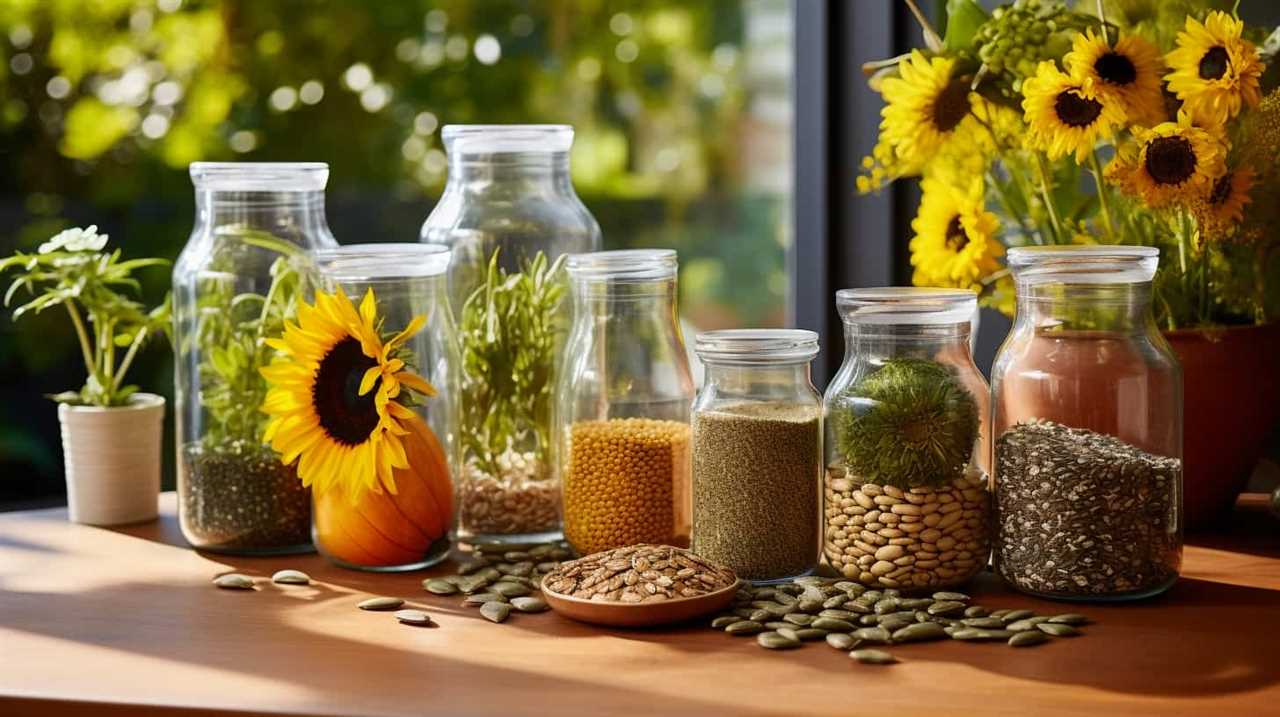
To plant chia seeds in containers, follow these steps:
-
Select a suitable container: Choose a container with good drainage and at least 6 inches deep.
-
Prepare the soil: Fill the container with well-draining soil mixed with compost for added nutrients.
-
Sow the seeds: Sprinkle the chia seeds evenly over the soil surface, then lightly press them into the soil.
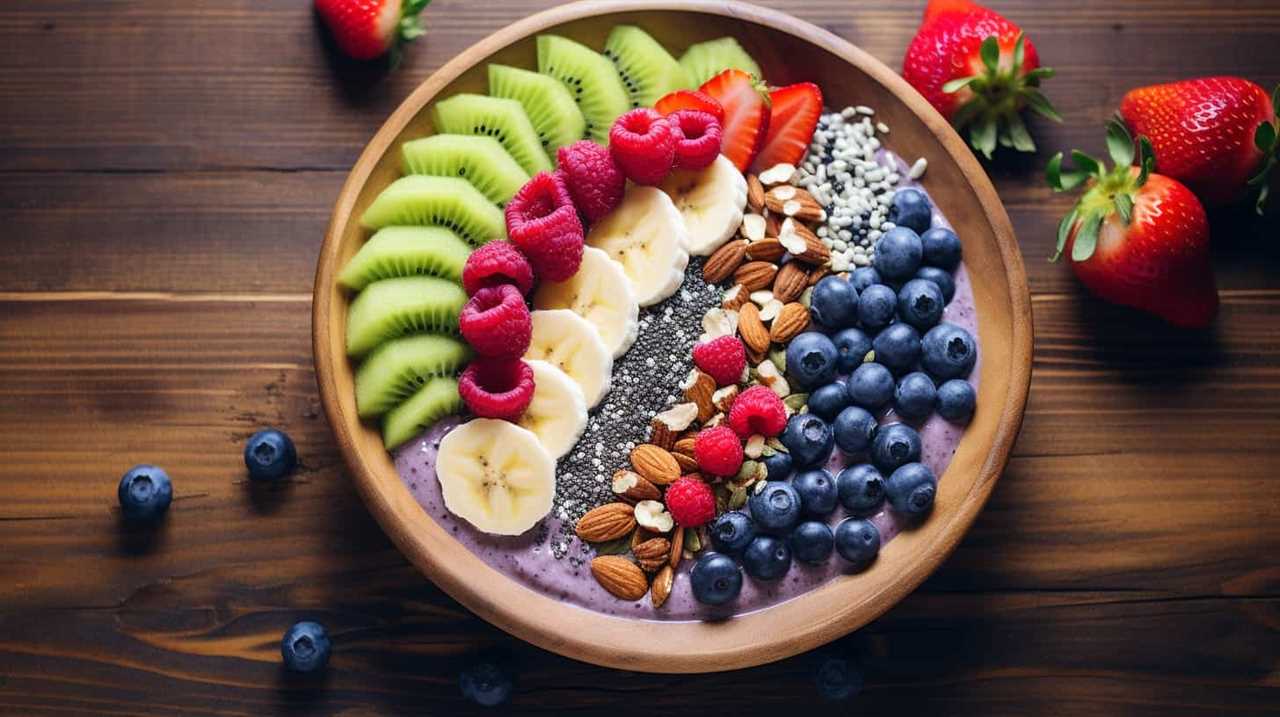
-
Water and place in sunlight: Water the seeds gently and place the container in a sunny location.
-
Maintain moisture: Keep the soil consistently moist but not waterlogged.
By following these steps, you can successfully grow chia seeds in containers and enjoy their numerous benefits.
In the next section, we’ll discuss caring for chia seedlings and ensuring their healthy growth.
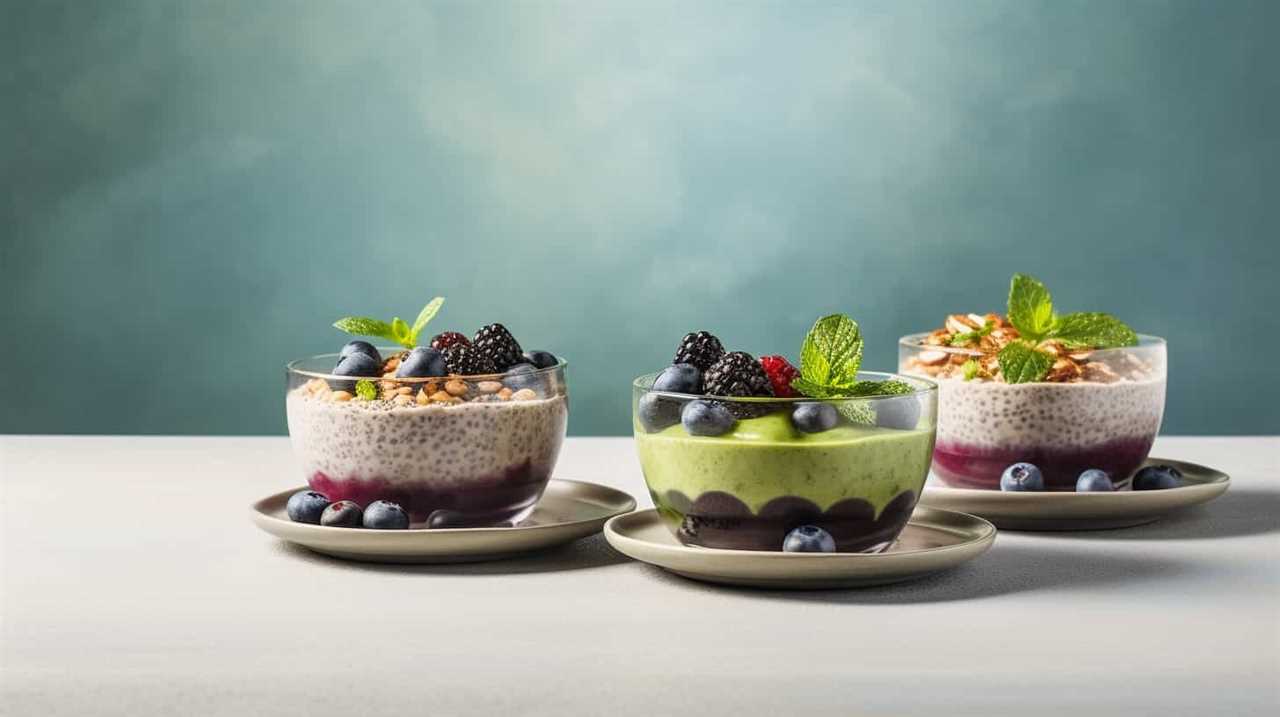
Caring for Chia Seedlings
After sowing the chia seeds in containers, we should focus on caring for the chia seedlings to ensure their healthy growth. Here are some important steps to take in caring for chia seedlings:
-
Watering: Chia seedlings require regular watering, ensuring that the soil remains moist but not waterlogged.
-
Light: Chia seedlings need plenty of light to grow properly. Place them in a sunny spot or use artificial grow lights if needed.
-
Fertilizing: Use a balanced organic fertilizer to provide essential nutrients to the seedlings.

-
Protecting from pests: Common pests that can affect chia seedlings include aphids, slugs, and snails. Use organic pest control methods to keep them at bay.
-
Preventing diseases: Chia seedlings can be susceptible to damping-off disease, caused by fungal infection. To prevent this, ensure good air circulation and avoid overwatering.
By following these steps, you can ensure the healthy growth of your chia seedlings and prepare them for a bountiful harvest.
In the next section, we’ll discuss the process of harvesting and storing chia seeds.
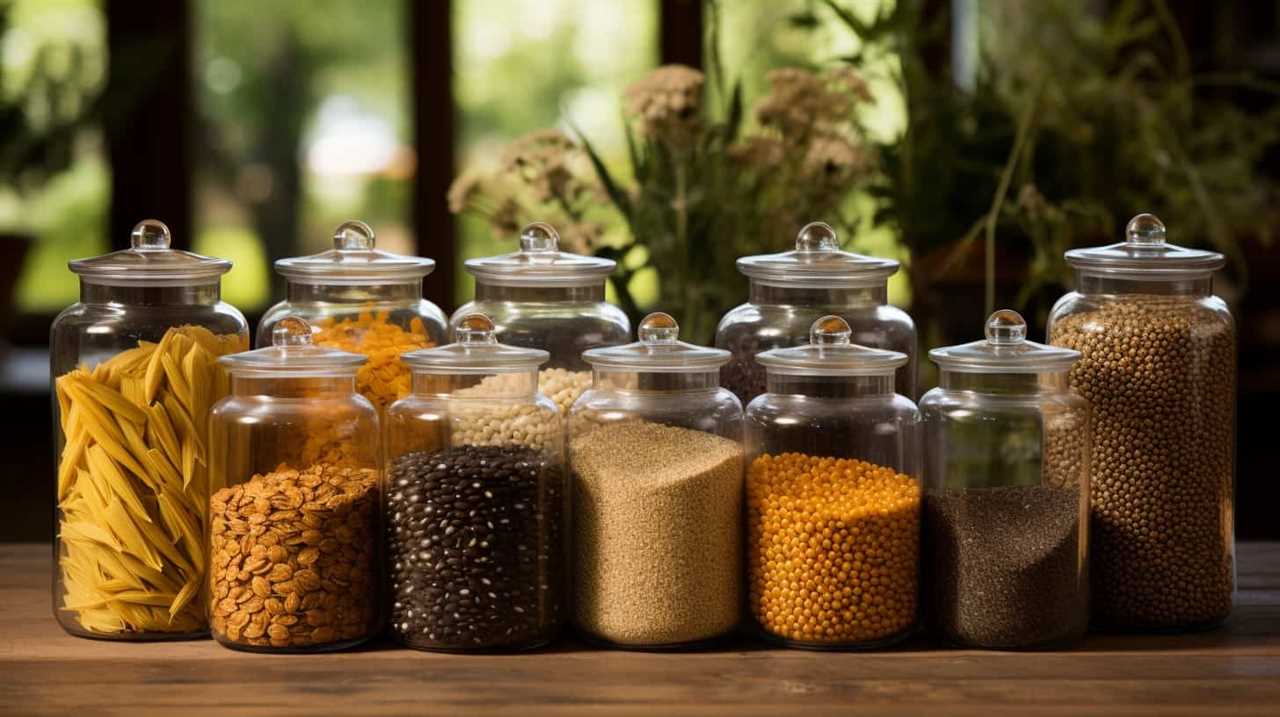
Harvesting and Storing Chia Seeds
Once the chia seedlings have reached maturity, we can begin the process of harvesting and storing the chia seeds.
Harvesting chia seeds is a simple task that requires a few essential tools.
First, we need to cut the chia stalks close to the ground using sharp pruners or scissors.
Next, we gently thresh the stalks over a large sheet or tarp to separate the seeds from the plant material.
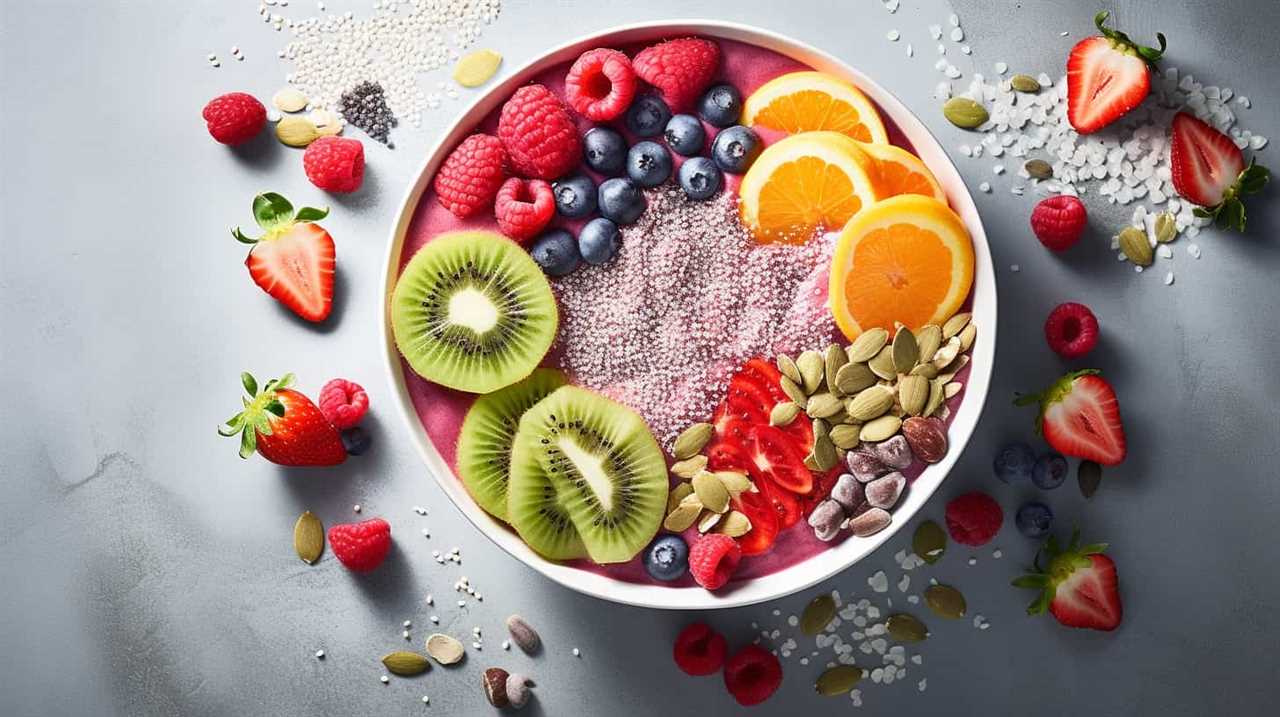
To ensure the seeds are fully dry, we spread them out in a single layer and allow them to air dry for a few days.
Once the seeds are dry, we can store them in airtight containers in a cool, dark place for up to two years.
Frequently Asked Questions
Can Chia Seeds Be Grown Indoors Without Natural Sunlight?
Yes, chia seeds can be grown indoors without natural sunlight. By using artificial light and hydroponics, we can create optimal growing conditions for chia seed cultivation. This method allows for year-round production of this nutritious superfood.
How Often Should I Water My Chia Seedlings?
We should water chia seedlings regularly to maintain optimal conditions for growth. The frequency of watering depends on factors such as soil moisture and temperature. It is important to ensure that the soil is moist but not waterlogged.

Can I Plant Chia Seeds Directly in the Ground Instead of Using Containers?
Yes, you can plant chia seeds directly in the ground. The benefits of outdoor growth include better access to sunlight and natural nutrients. It is important to prepare the soil properly and follow tips for successful germination.
What Is the Average Germination Time for Chia Seeds?
On average, chia seeds take around 7-14 days to germinate. This process is crucial for cultivating homegrown superfood. The benefits of chia seeds for health and nutrition make them worth the wait.
Can I Harvest Chia Seeds Multiple Times From the Same Plant?
Yes, you can harvest chia seeds multiple times from the same plant. However, proper chia seedling care, such as providing adequate sunlight, water, and nutrients, is crucial to ensure a healthy and productive harvest.
Conclusion
In conclusion, cultivating your own chia seeds is a rewarding and practical way to ensure a constant supply of this superfood in your home. By following the detailed and scientific steps outlined in this guide, you can successfully grow chia seeds from start to finish.
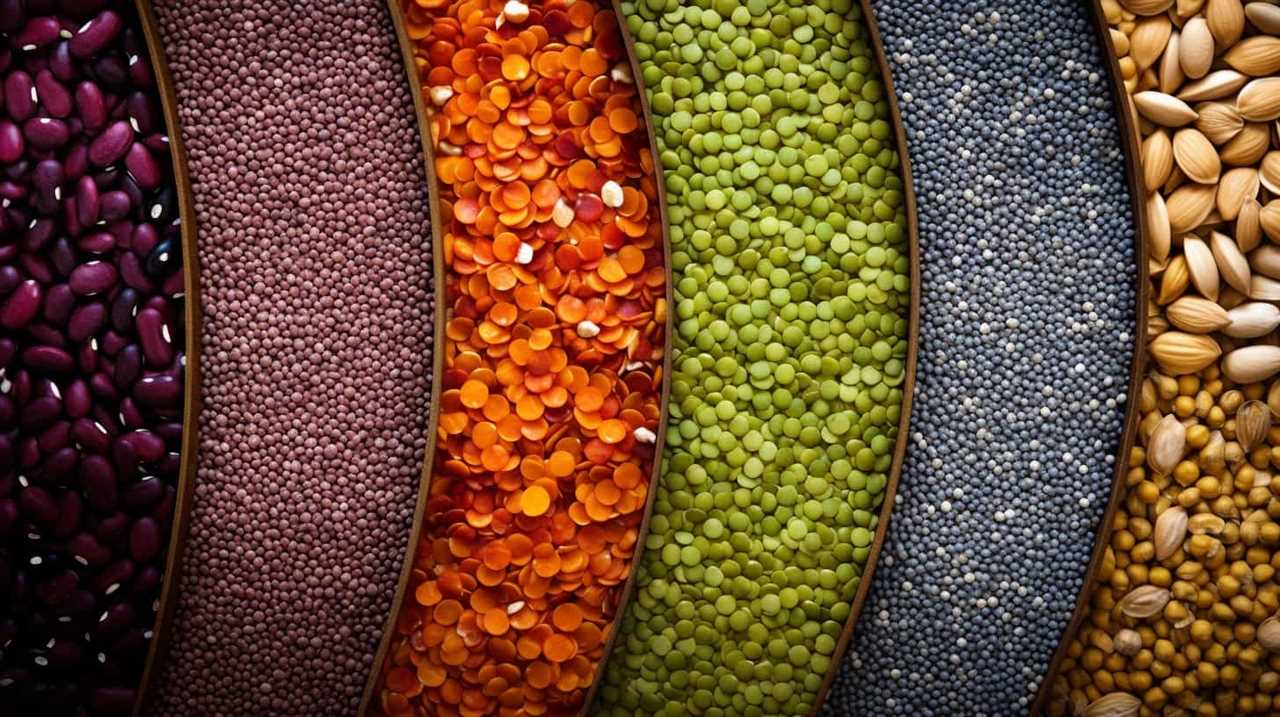
Imagine the satisfaction of harvesting your own nutrient-packed chia seeds, knowing that you have played a part in their journey from seed to table.
So why wait? Start your homegrown superfood adventure today!

